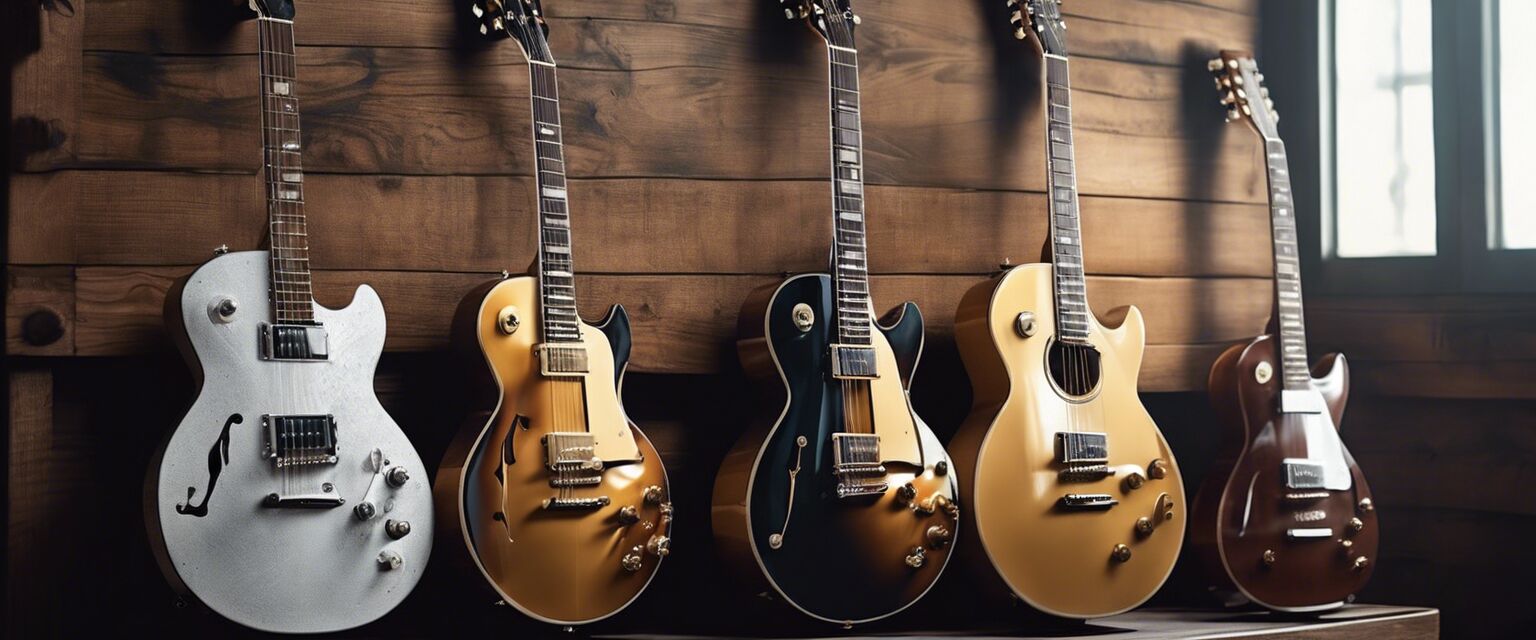
Electric Guitar Effects Pedals
Key Takeaways
- Electric guitar effects pedals enhance the sound of your guitar.
- There are various types of pedals including distortion, delay, and reverb.
- Choosing the right pedal depends on your musical style and needs.
- Understanding the differences between pedals can help you make an informed purchase.
- Consider your budget, as effects pedals can vary widely in price.
Electric guitar effects pedals are essential tools for guitarists looking to shape their sound. They can add depth, texture, and a variety of tones to your playing. Whether you are a beginner or a seasoned professional, understanding the different types of pedals available and how to use them can significantly enhance your musical expression.
What are electric guitar effects pedals?
Electric guitar effects pedals are devices that modify the sound of an electric guitar. They can alter the tone, volume, and overall output of your instrument to create a unique sound or effect. From subtle enhancements to extreme alterations, the right pedal can help you achieve your desired sound.
Types of electric guitar effects pedals
There are several categories of effects pedals, each serving a specific purpose. Here's a breakdown of some popular types:
| Type of Pedal | Description |
|---|---|
| Distortion | Adds a gritty, aggressive sound to your guitar. |
| Overdrive | Produces a warm, smooth tone, often used in blues and rock. |
| Delay | Repeats the sound of your notes after a short period, creating an echo effect. |
| Reverb | Adds a sense of space and depth to your sound. |
| Chorus | Thickens your sound by layering it with a slightly detuned version of itself. |
| Wah | A filter effect that creates a vocal-like quality by emphasizing certain frequencies. |
How to choose the right effects pedal
Choosing the right effects pedal can be overwhelming due to the wide variety available. Here are some tips to help you make a decision:
Beginners Section
- Identify your musical style: Consider the genres you play, as certain pedals work better for specific styles.
- Start with a versatile pedal: A multi-effects pedal can provide a range of sounds without breaking the bank.
- Set a budget: Pedals can range from affordable to high-end; set a budget to narrow your options.
- Research: Read reviews and watch demo videos to understand how different pedals work.
- Try before you buy: If possible, test out pedals in a music store to see how they interact with your guitar and amp.
Popular electric guitar effects pedals
Here's a closer look at some popular pedals that many guitarists love:
| Pedal Name | Type | Features | Price Range |
|---|---|---|---|
| Boss DS-1 | Distortion | Classic tone, durable build, versatile. | $50 - $70 |
| MXR Carbon Copy | Delay | Analog delay, warm sound, simple controls. | $150 - $200 |
| Electro-Harmonix Holy Grail | Reverb | Multiple reverb types, compact design. | $150 - $170 |
| Ibanez TS9 | Overdrive | Classic tube screamer sound, boost feature. | $100 - $130 |
| Line 6 Helix | Multi-effects | Extensive effects library, amp modeling. | $1,200 - $1,500 |
Setting up your effects pedals
Once you've chosen your pedals, setting them up correctly is essential for achieving the best sound. Here's a simple guide:
- Connect your guitar to the input of the first pedal.
- Link your pedals in series using patch cables.
- Connect the last pedal to your amplifier.
- Turn on your effects pedals and amp.
- Tweak the settings on each pedal to find your desired sound.
Common mistakes to avoid
Many beginners make common mistakes when using effects pedals. Here are a few to watch out for:
- Using too many pedals: Less can be more; start with a few and add more as you become comfortable.
- Not understanding the signal chain: The order of pedals affects the overall sound.
- Ignoring power supply: Ensure you're using the correct power supply to avoid damaging your pedals.
- Neglecting to experiment: Don't be afraid to try different combinations and settings!
Browse Related Products
For electric guitars and accessories, explore our product collections:
Pros
- Enhances creativity and sound options.
- Wide variety of effects to suit different styles.
- Portable and easy to use.
Cons
- Can be expensive if buying multiple pedals.
- Learning curve for beginners to understand each effect.
- Potential for signal degradation with poor setups.
Pedal Power
Electric guitar effects pedals are a fantastic way to enhance your sound and express your musical creativity. By understanding the different types of pedals, how to choose the right ones, and how to set them up, you can take your playing to the next level. Experiment with different sounds, and most importantly, have fun!








